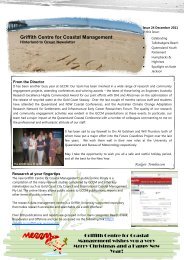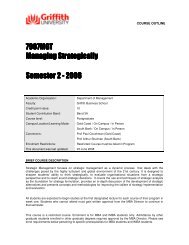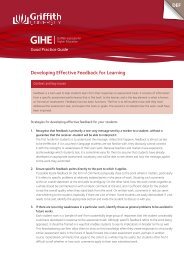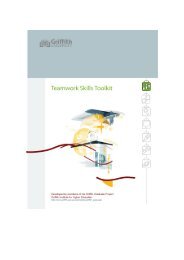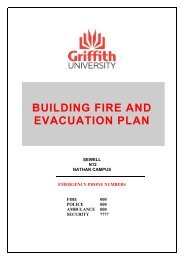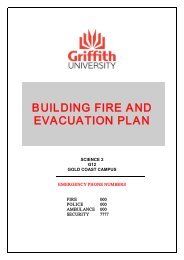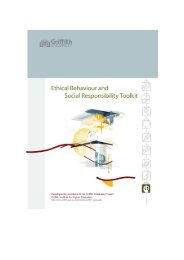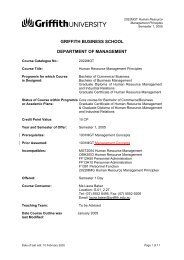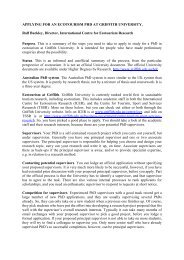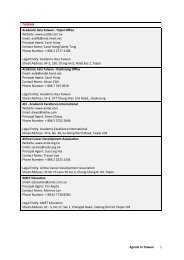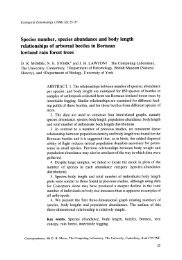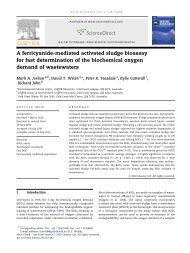MVP Evaluation Report Year 2 - Griffith University
MVP Evaluation Report Year 2 - Griffith University
MVP Evaluation Report Year 2 - Griffith University
Create successful ePaper yourself
Turn your PDF publications into a flip-book with our unique Google optimized e-Paper software.
2000 – 2 0 0 1 M V P E v a l u a t i o n R e p o r t<br />
Focus groups provided evidence that, on the whole, young women are doing quite well in <strong>MVP</strong>. In fact,<br />
for the first time data allude to the fact that <strong>MVP</strong>‟s bystander approach is perhaps exactly what is<br />
responsible for the feelings of safety and empowerment that young women feel after training. The<br />
bystander component appears to counteract girls‟ initial feelings of being overwhelmed or fearful about<br />
the prevalence of gender violence. Focus group data also reinforce the need for follow-up to basic<br />
awareness-raising training such as TTT and once again show that young women may benefit from a<br />
more sophisticated level of knowledge training from <strong>MVP</strong>.<br />
Certainly, data from this second year of evaluation activity tell their own powerful tale. Though limited<br />
by a small comparison sample, the comparison group design is an important improvement over <strong>Year</strong> 1.<br />
With this design, the positive impacts detailed above can be attributed more emphatically to the <strong>MVP</strong><br />
Program. Added to this, results regarding knowledge, attitudes, and self-efficacy were proven to be<br />
robust using multiple analytic procedures. As well, qualitative data insert the voice of the <strong>MVP</strong><br />
participant into the evaluation.<br />
But the story becomes even more compelling when coupled with findings from the first year of<br />
evaluation activity. The results of the <strong>Year</strong> 1 evaluation were largely confirmed and replicated in the<br />
<strong>Year</strong> 2 study, underscoring the effectiveness and potential of the <strong>MVP</strong> Program. Similarly, <strong>Year</strong> 2<br />
results are couched in the extensive contextual data from <strong>Year</strong> 1. The argument concerning <strong>MVP</strong>‟s<br />
effectiveness is strengthened by a multi-method, multi-level, and multi-year evaluation approach that<br />
provides a clearer, more comprehensive picture of the Program and its impact than could be realized<br />
through a pre/post survey or a single year of program evaluation alone. A third year of evaluation<br />
activity, which replicates the quasi-experimental design described here, is currently underway at <strong>MVP</strong>.<br />
Mounting evidence from this multi-year approach, including the impressive results reported here, builds<br />
a strong case for the support, replication, and expansion of the <strong>MVP</strong> Program. The case for <strong>MVP</strong><br />
would be additionally strengthened with an investigation into the longer-term impact(s) of their<br />
Program. In the future, <strong>MVP</strong> should consider conducting follow-up research with participants.<br />
M e n t o r s i n V i o l e n c e P r e v e n t i o n<br />
P a g e 27




